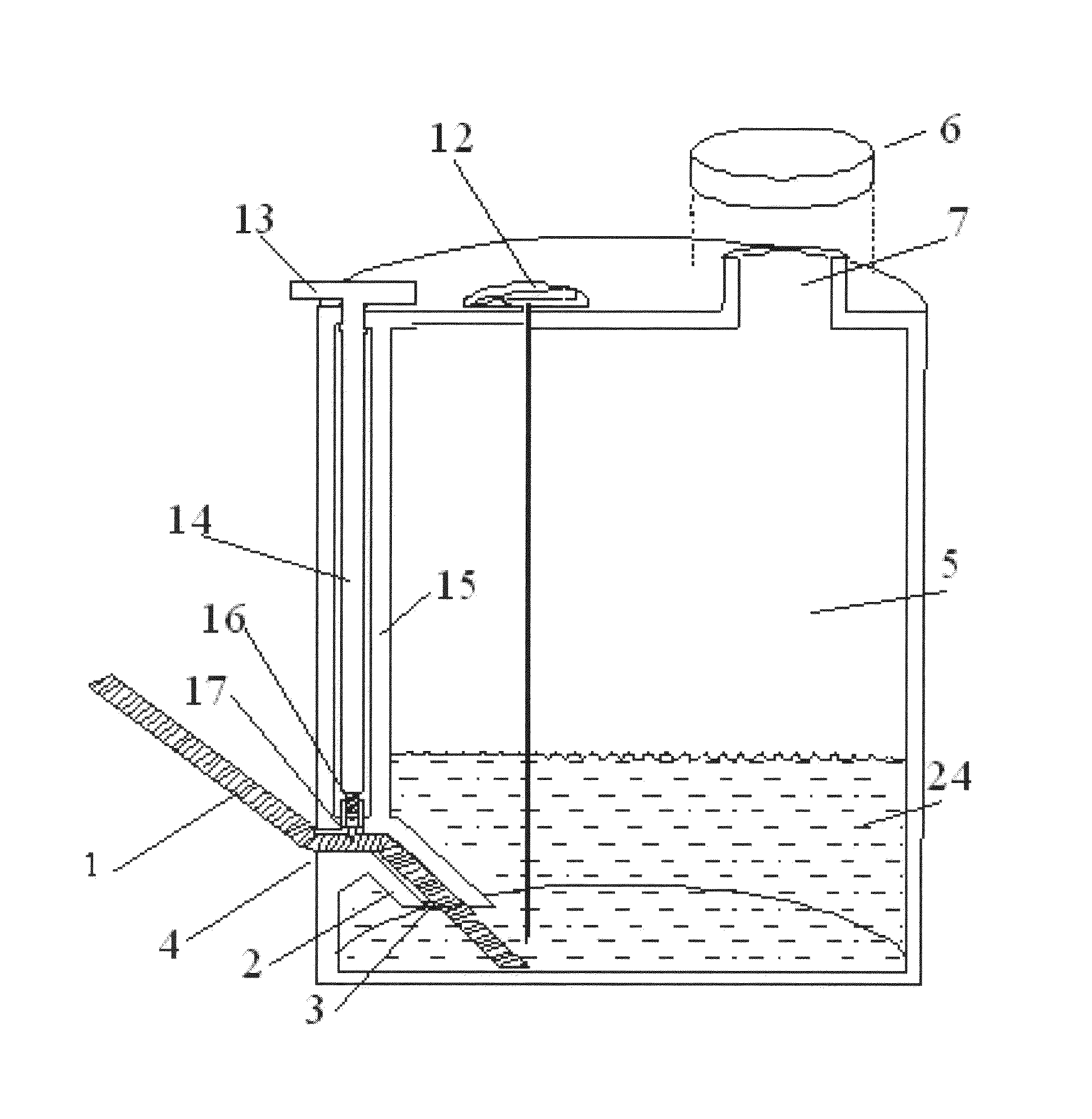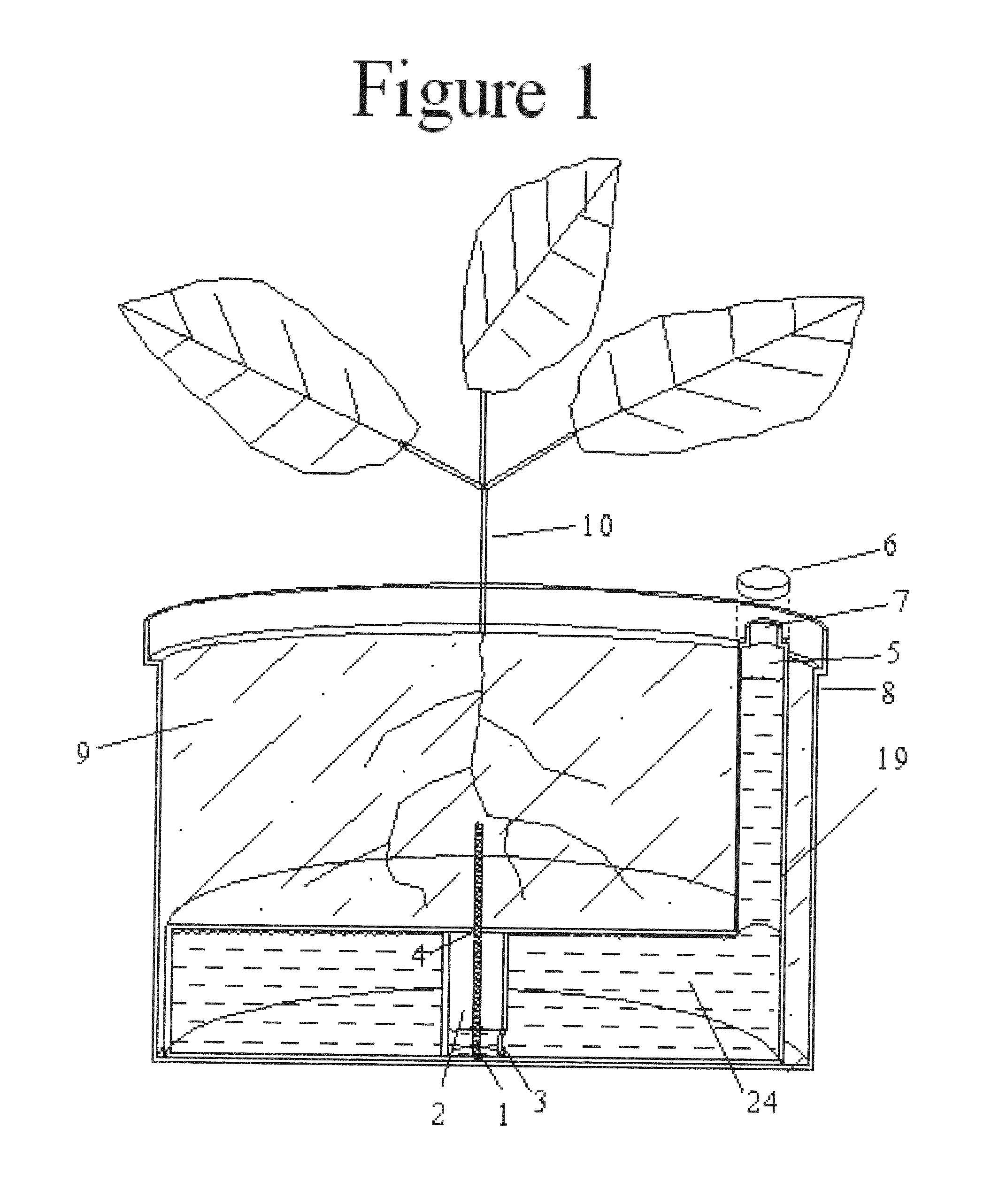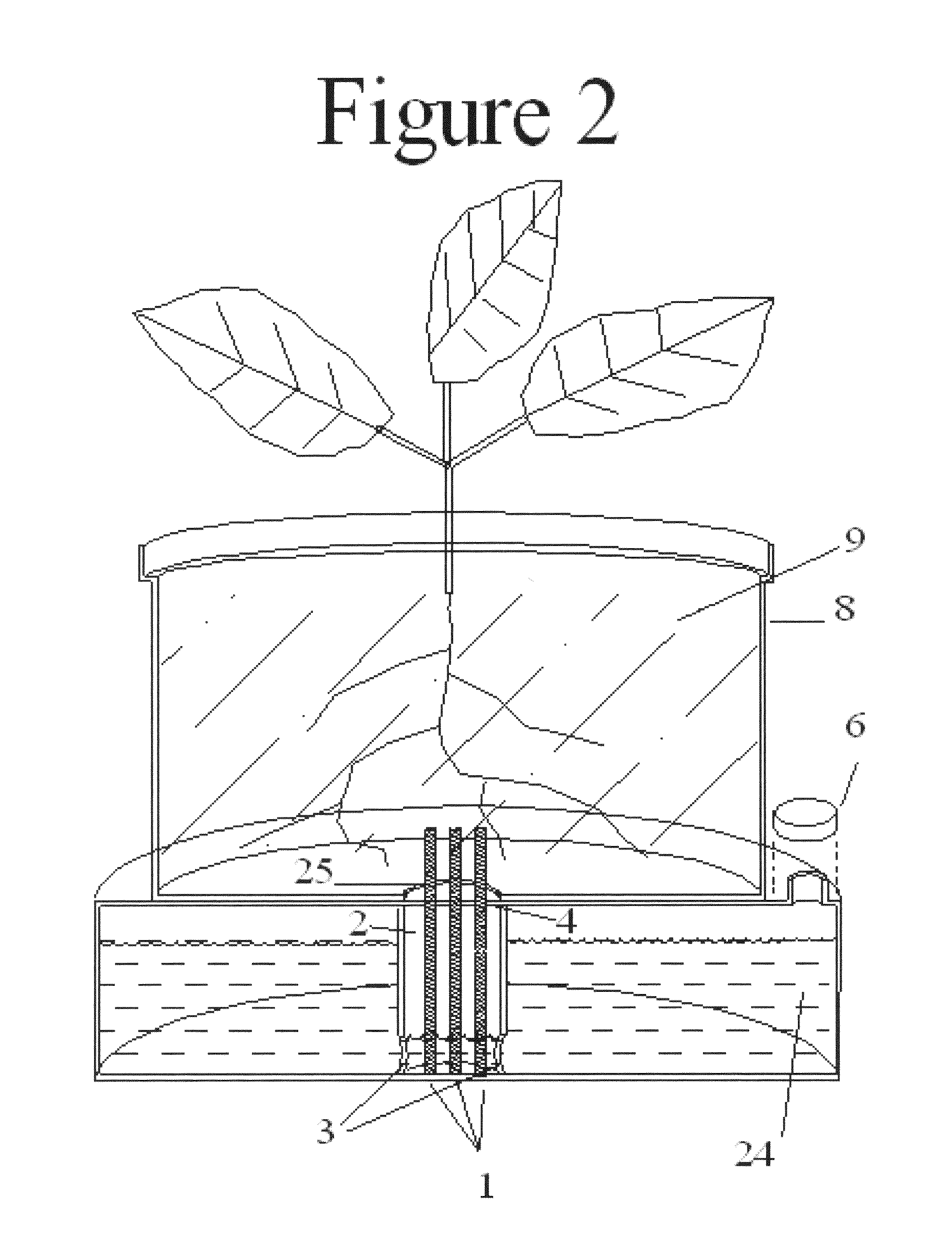Self watering plant system
a plant system and self-watering technology, applied in the field of self-watering plant systems, can solve the problems of uncontrollable water running into the soil, most plants do not adequately regulate the amount of water given to them, etc., and achieve the effect of reducing the large fluctuation in soil moistur
- Summary
- Abstract
- Description
- Claims
- Application Information
AI Technical Summary
Benefits of technology
Problems solved by technology
Method used
Image
Examples
Embodiment Construction
[0016]In FIG. 1, a cross sectional view, the invention is shown in an embodiment that is inserted into any standard plant pot 8. The cap 6 is removed to pour liquid 24 through the spout 7, filling the reservoir 5. During filling, water is restricted from flowing freely into the soil 9 by the diameter of the hole 4 at the top of the wick housing 2. The hole 4 should be snug around the wick 1 so that liquid 24 must flow through the wick 1 to enter the soil 9. The hole 4 should not be so tight as to pinch off the flow of liquid 24. Since the wick 1 remains wet, organic materials such as cotton is would be prone to rot. For this reason, a non-organic material is recommended for the wick 1.
[0017]When the reservoir is full and the cap 6 is used to close the spout 7, a vacuum is created and liquid 24 cannot leave the reservoir until the vacuum is broken. In order to create the vacuum, the body of the reservoir 19 must be made of a non-porous material. Also, the cap 6 must make a tight seal...
PUM
 Login to View More
Login to View More Abstract
Description
Claims
Application Information
 Login to View More
Login to View More - R&D
- Intellectual Property
- Life Sciences
- Materials
- Tech Scout
- Unparalleled Data Quality
- Higher Quality Content
- 60% Fewer Hallucinations
Browse by: Latest US Patents, China's latest patents, Technical Efficacy Thesaurus, Application Domain, Technology Topic, Popular Technical Reports.
© 2025 PatSnap. All rights reserved.Legal|Privacy policy|Modern Slavery Act Transparency Statement|Sitemap|About US| Contact US: help@patsnap.com



